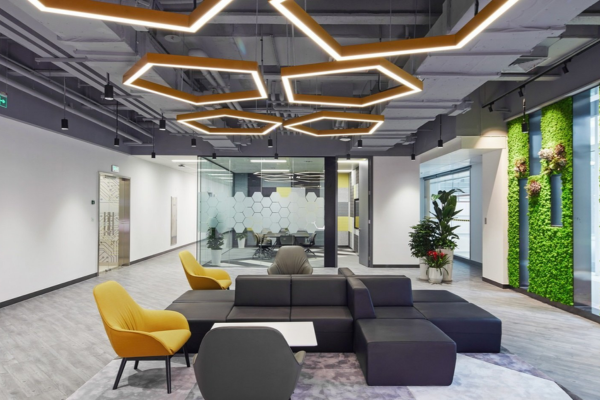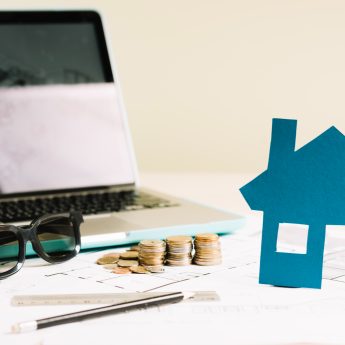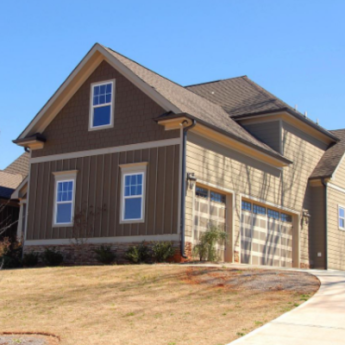Engaging Commercial Spaces: How Design Transforms Business Environments

Commercial space design is shifting from traditional layouts. It focuses on being creative, engaging spaces, redefining consumer expectations, and serving practical purposes.
Professionals focus on creating memorable, impactful environments to differentiate businesses in competitive markets.
Design has a sneaky way of influencing our decisions. Sometimes, we don’t even realize it properly.
In the realm of commercial design company settings, this influence is pervasive.
Imagine this: You are entering a retail store! It feels open, welcoming, and modern. The layout, lighting, and colors have been perfectly chosen to help you toward a particular experience.
Commercial space design is a complex process beyond aesthetics, aiming to enhance business performance, consumer perception, and engagement.
It involves creating an environment that influences consumer behavior, ensures functionality, and leaves a lasting impression, transforming business environments.
What is commercial design?

Commercial design creates spaces, products, and further experiences for businesses and organizations. This includes graphic, packaging, web, and environmental design.
Now, what does the commercial design usually involve? Let’s take a look at that—
- The commercial designers plan for businesses, government buildings, and other specific corporate entities.
- The commercial design creates a visual solution that strongly represents a brand and an identity. This helps you to convey a message to the target audience.
- This design caters to the target audience’s needs, preferences, and behavior.
- The designs also consider the brand or business’s goals, values, and identity.
- Commercial design lets you optimize a business’s ability to make the maximum profit.
Moreover, this design is used in commercial spaces to create visually appealing and functional environments that align with the brand identity. This further helps in attracting customers.
On top of that, you can utilize the commercial design to reinforce the company’s overall image, using colors, materials, layout, and even the overall aesthetic. You also have to pay attention to the space.
The space must be well-optimized for the intended purposes, including sales, meetings, and customer interaction.
The Psychological Impact of Design on Consumers
The commercial space design can affect how customers feel and react when they step in. The basic key aspects of the design psychology in the commercial spaces are such as,
Color Psychology
Each color has the power to evoke distinct emotions. For example, red is considered as a bold color. It can also create urgency. Green can signify nature and calmness, while blue can be all about trust adn faith.
Lighting
Lighting can make a huge impact on a consumer’s mood. Bright lighting can easily energize the customers. While on the other hand, softer lighting can create a relaxing atmosphere in your commercial space.
Layouts And Different Pathways
Your commercial space can guide your customers through a specific path. So, take your time and make a plan. Try to expose them to a wider range of products. This way, they can increase impulse buys.
Better Space And Texture
A particular space’s size and texture easily influence the feeling of openness, intimacy, and luxury.
Visual Cues and Branding
You must maintain consistency in your branding elements. This includes logos, colors, and fonts. This can help build familiarity and trust with all the customers.
Key Elements of Effective Commercial Interiors

Effective commercial interiors must have better lighting, furniture, and other spatial arrangements. Each element has its own purpose of serving.
Proper lighting can help to highlight the products. You can easily see a great ambiance and focus on key areas.
Now, adding furniture can make the place more aesthetically pleasing. It can enhance customer experience and motivate customers to buy stuff.
Always remember that you have to curate spatial arrangements. It can further support the business identity along with the practical arrangements. So, you must focus on balancing these elements to embrace the thriving business environment.
Trends Shaping Modern Commercial Design
A huge variety of trends highly influences modern commercial design. It mainly includes technology, wellness, and sustainability.
Sustainability
- Commercial design uses sustainable materials such as reclaimed wood and pallets. This further helps in reducing waste.
- The designers are focusing on designing buildings that are much more energy efficient.
- Investors have started to show interest in green-certified buildings.
Technology
- The Internet of Things (IoT) automates lighting control, climate control, and overall security.
- Touchless technologies and augmented reality or AR is enhancing the customer experience.
Wellness
- The designers focus on designing quiet zones for mindfulness spaces. They aim to promote both physical and mental health.
- The spaces can further encourage both collaboration and spontaneous meetings.
Minimalism, Biophilia, and other commercial designs are influencing space conceptualization. They are focused on simplicity and better functionality.
Everything about minimalism offers you a clean, uncluttered look. On the other hand, biophilia emphasizes better efficiency and calming elements.
On the other hand, biophilia aims to bring the outdoors inside, integrating elements like natural light and greenery to promote a sense of well-being.
The design experts believe these are more than just trends. They are movements shaping the future of commercial spaces.
So, once you embrace these trends, you can make spaces more innovative, refreshing, and appealing to a modern audience.
Sustainability in Commercial Design
Sustainability is increasingly important in commercial design strategies. It benefits the environment and offers long-term cost savings.
Businesses find it crucial for their brand identity and consumer perception. They focus on reducing their environmental footprint for eco-conscious customers, creating a unique selling proposition.
Wrapping it up!
In conclusion, you can never underestimate the overall power of interior design. Instead, you must prioritize various thoughtful designs and choose one that caters to employees’ and clients’ needs.
This way, businesses can create inspiring, engaging spaces and drive success. There is a lot of benefits to investing in commercial designs. It can help you to enhance your productivity and create a great brand identity.
The modern business landscape comes with a lot more complexities. So, the key is to use commercial designs. This way, you can foster growth, innovation, and success inthe future.











Leave A Reply